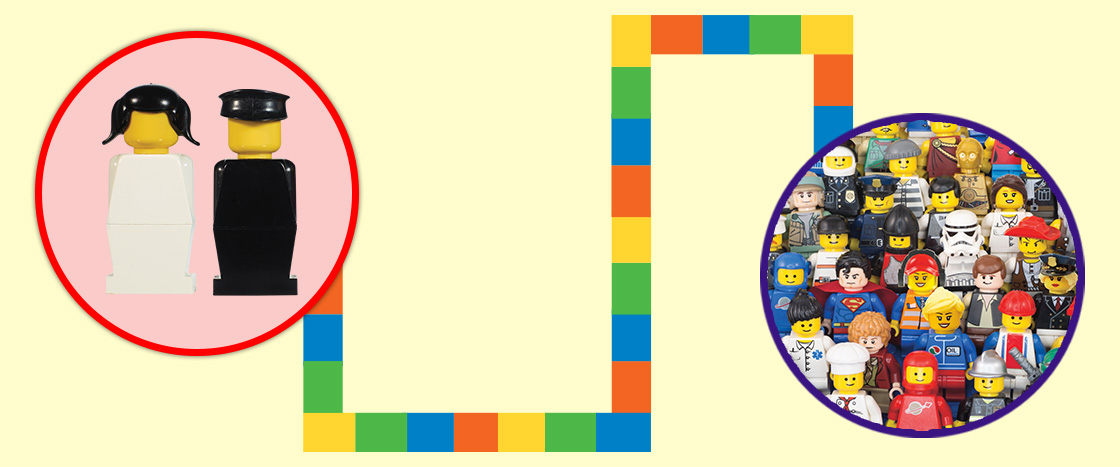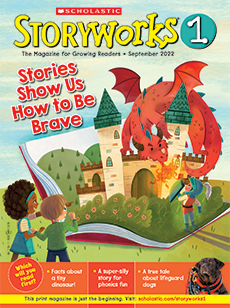1. Look at the first LEGO people. They had no arms or faces!

The Story of LEGO® People
Let’s look at LEGO® people! They have changed a lot over time. Follow the path to see how.
Learning Objective: Students will use an infographic to understand how LEGO® people have evolved over time.
He was a spaceman.
2. Later on, LEGO people all had smiling faces. They were called minifigures.
3. After that, they had all kinds of faces. They could be happy, sad, or mad.
4. Then Star Wars minifigures came out. Hello, Yoda!
The spaceman is back!
5. Later The LEGO® Movie was a hit. It had a lot of LEGO people.
6. Today there are new minifigures each year. Do you have a favorite?
More About the Article
English Language Arts Focus
Sequencing
Nonfiction text features
Social Studies Focus
History and culture
Implementation
- Whole group
- Small group
Pairings and Text Connections
- From the Storyworks archive: “Paired Text: Could You Be a LEGO Master?" (May/June 2023)
- Suggested books: LEGO Minifigure Handbook by Hannah Dolan
Before-Reading Resources
- Video: Making Minifigures (5 minutes) Learn about how LEGO minifigures are made.
Suggested Reading Focus
How things change over time (20 minutes)
- Preview the article with students. Explain that it is an infographic, which arranges pictures and text in a way that gives you information. Ask them what they notice about the nonfiction features.
- Tell children that you will be learning about the history of LEGO people. Build excitement by asking them about what they know about LEGO people. What kinds have they seen before?
- Read the article. After each section, pause and check comprehension by asking students to summarize how the minifigures have changed.
- After reading, ask students to recall how LEGO minifigures have changed over time. Summarize their learning through discussion or on chart paper.
After-Reading Skills Practice
